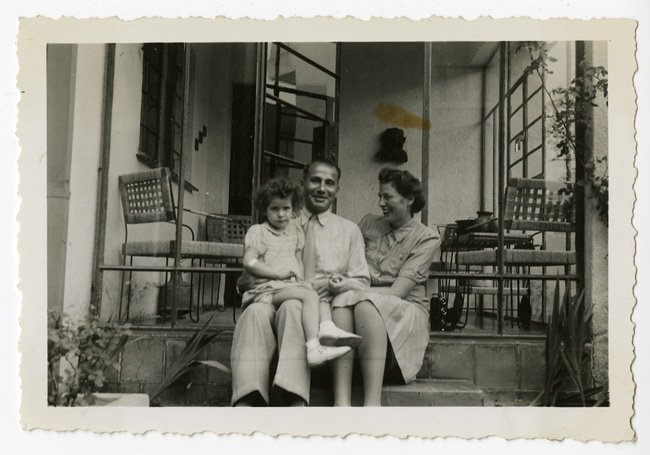During the Holocaust, unsanitary living conditions were a major issue that individuals faced in the ghettos, concentration camps, and displaced persons camps. While many infections and diseases were possible in these environments, typhus was the leading epidemic at the time, in large part because of a lack of medicine to treat the disease as well as the unsanitary living conditions. Typhus was the direct cause of thousands of deaths in the ghettos, various camps during the war, and directly after liberation in displaced persons (DP) camps. These living conditions did not come about by happenstance; they were purposefully created and constructed as part of Nazi policy. The Nazi regime sought to cause the deaths of Jews, and other concentration camp prisoners, by keeping them in overcrowded housing and unclean living areas while withholding proper medical care.
Highlighting another translated document from our collection, we introduce the Grunbaum family, a family that was directly affected by typhus during the Holocaust. Rita Van Leeuwen married Manfred Grunbaum in 1936. Their daughter Dorien was born in 1942.

Originally from Rotterdam, Netherlands, the family was arrested and deported to Westerbork camp in September 1943. In September 1944, they were transported to Bergen-Belsen where they lived in better conditions due to the fact that they were part of an Exchange Group of prisoners who held Palestine emigration certificates. With Allied forces soon approaching, the Grunbaum family, along with thousands of other inmates, were placed on a train headed to Terezin in April, 1945. The train never made it to its destination; railways and stations bombed by Allied forces made it necessary to instead keep changing course. Finally, after two weeks, the train was able to stop in Troebitz, Germany. Soviet forces liberated the train passengers there, and found that many people on board had perished from typhus and other illnesses due to malnutrition and the poor living conditions.

Some, like Rita and Manfred, had contracted typhus along the way but were still alive upon arrival in Troebitz. After liberation, they spent two long months recuperating. They were able to travel back to the Netherlands in July, 1945 and later immigrated to the United States in 1946.
The Grunbaum family not only survived multiple concentration camps and horrific transportations, but a deadly disease as well. With liberation came a new set of struggles; it was never an easy return back to prewar life. The lack of proper nutrition and medical care, combined with the grueling torture and forced labor within the camps, left a lasting impact on so many. The road to recovery after typhus was long and painful and it highlights another aspect of the deep suffering and trauma inflicted upon Holocaust victims.

This story is one of both hardship and triumph and a good reminder that victims of the Holocaust were fighting to stay alive on many different fronts, through battles of both the mind and body.